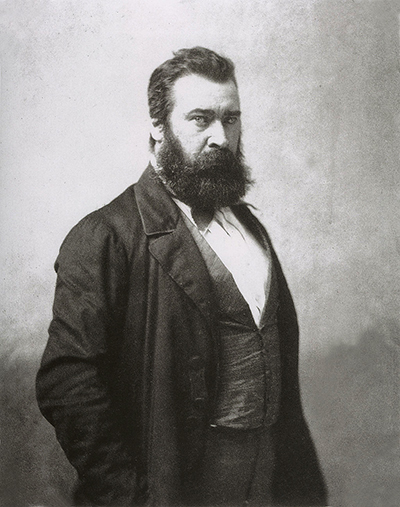Jean-François Millet was a highly respected French artist from the 19th century whose career brought attention to the lives of rural peasants.
The artist used precise detail as part of the famous Realism movement where academic teachings dominated their approach to art. Millet himself was skilled in several different mediums, including drawings, pastel work and oil paintings.
As a young man, Jean-Francois was taught all the menial tasks of working on a farm and this would inspire much of his work later in his career. He also switched from portraying the lives of peasants for pure pictorial value to actually beginning to become involved in commenting on social issues. This period in France was full of conflict between different classes and so his work was controversial with some, but supported by others.
In the modern era we are much more acceptant of different content and styles of art than the critics and public would have been back in the 19th century. Having worked on his family farm, the artist also felt a real connection with agricultural workers, rather than just viewing their lives from a position of high status, as some other artists had done.
Rise of the Realism art movement
Jean-François Millet was a significant member of the Realist art movement, alongside the likes of James Abbott McNeill Whistler and Gustave Courbet. This group of painters have received changing receptions from academics over the years, falling in and out of fashion in a seemingly endless cycle.
Courbet himself tackled peasant life in a similar way to Millet, and so their careers can be compared in a way that is helpful to understanding more about this period in French art. The culture and society of this great nation was turbulent at this time and tastes changed almost over night, with the famous artists reflecting this is their wide ranging plethora of work.
Several notable artists whose styles were similar to this group, but were not necessarily part of the Realism art movement would be Gustave Caillebotte, Édouard Manet and William-Adolphe Bouguereau.
Bouguereau himself was an academic artist whose popularity has fluctuated over the past few centuries but he took on a similar type of portraits to Millet and was also inspired by the lives of the working poor. He tended to use them in a more artistic manner, hiring them to model for him where as Courbet and Millet always prefered a more natural setting where they were busy at work, living their honest, normal lives.
Influence of the Barbizon School
Artist Millet also was integral in the formation of the Barbizon School, alongside the likes of Honoré Daumier. This respected group was more provincial than national in its spread but continues to be highly regarded today for its influence on later generations of artists and also the quality of the work that it produced.
Barbizon is a region in France that the artist settled in the summer of 1849 along with his wife and children. He would initially agree woth provide paintings and drawings in return for art materials which were proving to be particularly scarce at that time. His work would now finally start to be accepted by the French salon and this enabled him to sell to multiple other donors as well.




